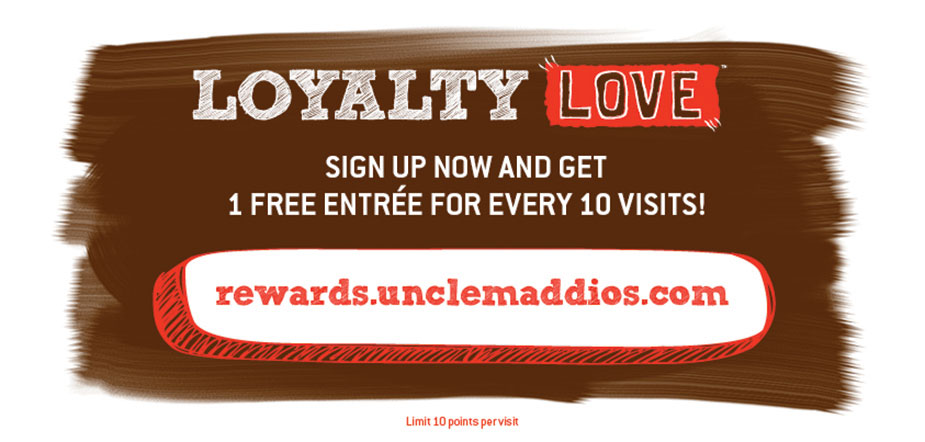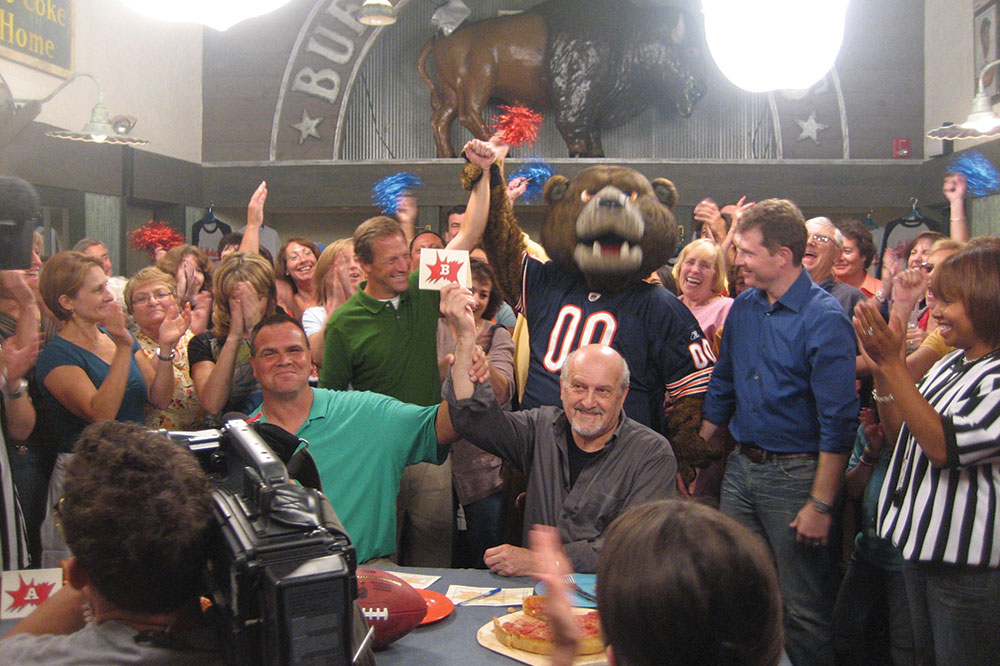Loyalty programs are ubiquitous as today’s restaurants strive to compete for every consumer dollar. But many pizzerias have plenty of room to grow when it comes to encouraging loyalty in their customers through well-planned and -executed rewards programs. “It’s crucial to focus on increasing loyalty,” says Kara Walsh, chief marketing officer at Rewards Network in Chicago. “It’s interesting how many restaurant owners say they want a loyalty program but also say they don’t need to reward loyal customers because they ‘come here anyway,’ focusing instead on acquiring new customers. A sustainable program will recognize the value in rewarding both behaviors.”
If you don’t have a loyalty program or if your existing program just isn’t paying off, we’ve got the answers you’re looking for. Follow these five tips from industry experts to make your program a resounding success:
1. Offer worthwhile rewards.
When creating a loyalty program, decide first whom you want to target for membership—and then give them what they want. For example, Chicago-based Lou Malnati’s (loumalnatis.com) endeavors to reward only its most loyal fans. Customers who sign up in-store or online must pay a $20 deposit (refunded as soon as the card is registered), which helps weed out casual customers. “We truly want our program to reward loyal customers, to do special things for them and single them out, so this deters just anyone from signing up,” says Meggie Lindberg, marketing manager for the 36-location Lou Malnati’s. “We find our loyal customers don’t mind making the commitment.”
Once customers have signed up, Lou Malnati’s makes sure they don’t regret it. Members receive a point for every dollar spent and earn a $20 reward when they reach 250 points. Points can be earned every day of the week but redeemed only Monday through Thursday. The best rewards, though, come in the form of special-event invitations—think wine tastings, beer-and-food pairings and even a shot at getting on national TV. “When Lou Malnati’s was featured on a Bobby Flay show on the Food Network, we needed customers to be in the store, so we invited our loyalty members, which made them feel special and included,” Lindberg recalls. “Afterward, we sent each member a copy of the DVD. Loyalty is about more than just earning points; it’s about making guests feel appreciated.”
At Minneapolis-based Solos Pizza Cafe (solospizza.com), the goal is to offer rewards that will get customers back in the pizzeria as quickly as possible. Customers joining Solos’ P.E.P. Club (an acronym for “People Enjoying Pizza”) receive 20 points just for signing up. Because the system awards a point for every dollar spent and 25 points earns a $2.50 certificate, when a customer signs up in-store and purchases lunch or dinner, he has already won his first reward for use on a future order. “We want to create a habit and make that customer come back quickly, so we generate an automatic email of welcome and tell the customer he has earned his first reward,” explains Brian Banick, president of Solos, which has three locations and more than 29,000 P.E.P. members. Solos also allows its loyalty members access to special deals, like “kids eat free” months or double points on slower weekdays. Plus, club members receive information on new menu items before they’re released to the general public, making them feel like insiders. Banick is currently working on a way to reward the top 10% of customers with extra-special rewards.
2. Make signup (and usage) a snap.
In today’s busy world, few customers are going to take the time to wade through an overly complicated process when registering for a loyalty program. “Ease of signup is very important, and you can take advantage of technology that makes it easier for the customer,” says Shep Hyken, who goes by the title of “chief amazement officer” at Shepard Presentations in St. Louis. “For example, having a card requires that the customer carry it around, but apps can store everything for the customer on the go. The best programs are simply tied to a phone number so that a customer doesn’t have to remember to bring anything.”
Walsh agrees that it’s crucial to create a seamless reward earning process and minimize inconvenience. Plus, she adds, automatic rewards—without cards to show, vouchers to print or coupons to clip—cut down on staff training and system updates while appealing to your customers’ needs.
Solos makes signup a breeze by offering a variety of ways to enroll both in-store and online. A customer can fill out his phone number and email address on a form or tell the cashier at checkout. Additionally, table tents display a QR code the customer can scan with a mobile device, taking him to online signup. Then, after enrollment, the customer simply provides his phone number when paying for his meal. “Cashiers are trained to ask, ‘Are you a P.E.P. Club member?’ and ‘You’ve earned a reward! Would you like to use it now?’” says Banick. “Meanwhile, customers have become trained to give us their phone numbers, and there are several pieces throughout the store—on our menu boards, at our make line—that tell or remind them about the program before they get to the register.”
At its 18 locations, Atlanta-based Uncle Maddio’s Pizza Joint (unclemaddios.com) integrates a customized loyalty program with its POS system, and a customer-facing screen at checkout prompts the guest to enter his phone number to track visits. Meanwhile, rewards earned are automatically tied to the account so that they’re seen by staff in-store, thus eliminating the need for patrons to print out coupons or remember codes. Customers can track their rewards online and through Facebook. “The most successful aspect for us has been ease of use. There’s nothing for the customer to keep up with, and he can gain and redeem rewards at any location,” says Cindy Wahl, the self-described “marketing chick” at Uncle Maddio’s. “That way, there are no negative experiences with guests. Tying it all in with our POS is a key component.”
3. Tailor your rewards.
At Solos, new P.E.P. members receive an email to complete their profile, filling in information such as physical address; birthday (when loyalty customers earn a free pizza); income range; number of children in the household; and whether the customer usually visits at lunch or dinner, prefers dine-in or takeout, or most often dines alone, with a guest or with family. “We want to understand what type of customer is attracted to Solos and tailor messages to those customers,” Banick notes. “The key is not to be intrusive but take a strategic approach to marketing. With so much competition, if we can target our messages, it’s a better deal—for us and the customer.”
Uncle Maddio’s uses a back-end dashboard to view customers’ spending habits and to set up mobile and email campaigns that target them. For example, if the customer hasn’t visited for a while, an automatic email is sent with a free dessert offer. “If we know that a customer’s pattern is to come in every 10 days and that customer deviates, we’ll send an email that says, ‘Are you on vacation? Did we do something wrong?’” says Wahl.
Walsh recommends talking to customers in a personalized way through the channels that are most convenient and relevant to them. “This means personalized and geo-targeted emails, user-friendly websites, mobile-optimized and tablet-optimized websites, and mobile apps that offer easy, immediate access,” she says. She also recommends engaging with customers, initiating a dialogue with them and being open and receptive to what they say—then using that information to improve upon the customer experience. “Restaurants can continue conversations after customers have left the restaurant, form relationships with them and create loyalty,” Walsh notes.
It’s also possible to work with a rewards company that allows you to offer more than just free food, such as gift cards for popular merchants or airline miles. “A successful loyalty program has to be focused on the customer—on their needs and wants, on their time, on their terms, and based on their behaviors,” Walsh adds. “This means providing customers with their preferred rewards currency based on their personal goals—a vacation, a new TV, a charitable cause or simply a percentage back in their pocket. One size does not fit all.”

4. Integrate social media.
Why not target customers where they already spend so much time—on social media sites? Solos customers can sign up for the P.E.P. Club on Facebook. Uncle Maddio’s also allows registration through its corporate Facebook page, but it goes a step further with social media integration: When a customer enters his information in-store, a message will post on Facebook announcing that he just checked in at Uncle Maddio’s, which puts the business in front of that customer’s friends in an instant. “Even liking us on Facebook gets the customer points, and we offer referral points for sharing our company with friends,” Wahl says.
Walsh believes that social media should be a part of any successful loyalty program, boosting exposure and incentivizing members to participate and engage with your pizzeria and share feedback. “It’s not only about getting great data from your loyal customers, but making that data actionable,” she says. “And keep in mind that people on different devices are going to be looking for different things.” For example, those on desktop computers may be at work and looking for a lunch spot; those on tablets may be at home planning for a future dining experience; and those on smartphones are likely on the go and seeking a place to eat right now (or are sharing their experience online). “Make sure the user experience is geared toward what device they’re on, ensuring your mobile site and apps work really hard for your business,” Walsh advises.
5. Give back to the community.
Customers are increasingly interested in using rewards for charitable or community contributions, so make this option available to them. In the competitive restaurant industry, this helps set you apart from the pack. Hyken recounts a story in which a local hardware store found itself competing with a brand-new Home Depot. Instead of spending more on advertising, the owner allocated 95% of his advertising budget to giving back to the local community, and his business flourished. “Having a loyalty program in which customers can choose to give their earned rewards to their choice of charities—you can offer them five to 10 choices—is a cool way of bonding with the customer and the community,” Hyken says. “It’s the law of reciprocity—when you’re loyal to your customers, they’ll be loyal to you.”













